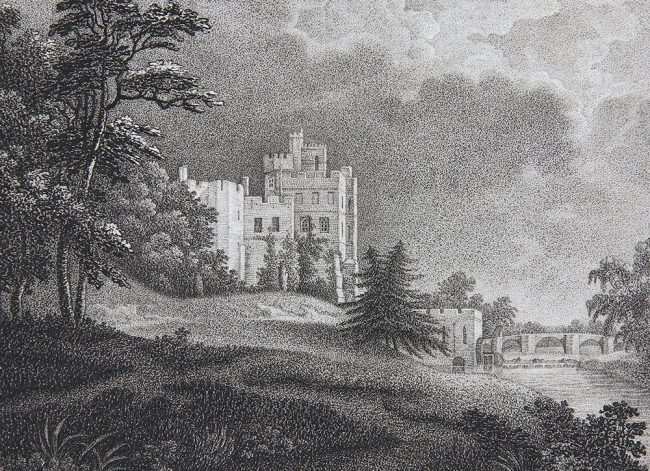
A 1788 engraving of the house from "Angus's Views of Seats." By kind permission of a private collection.
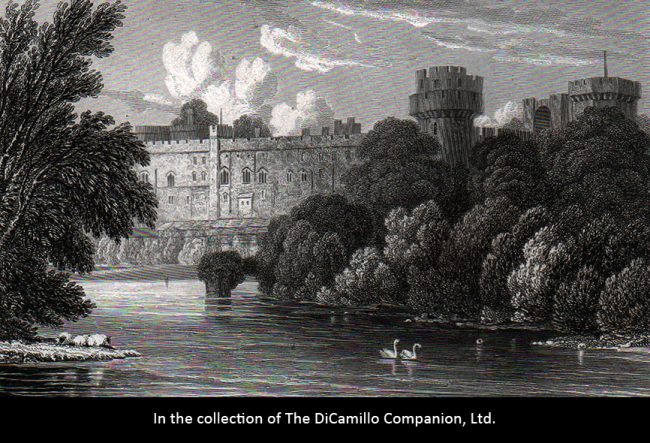
An 1829 engraving of the castle from "Neale's Views of Seats"
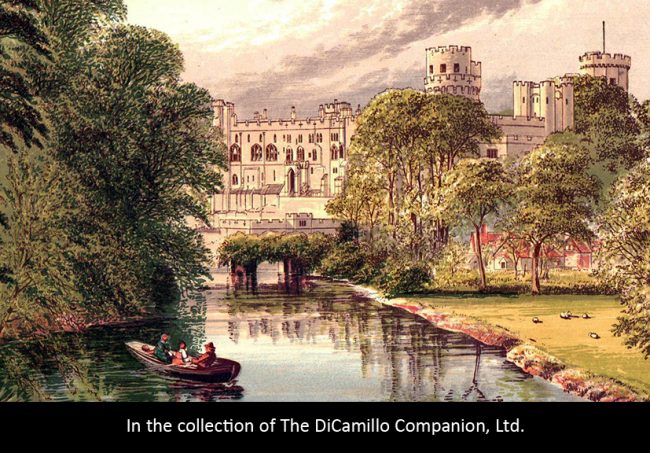
The castle from "Morris's Views of Seats," circa 1875.

The castle from an early 20th century photo
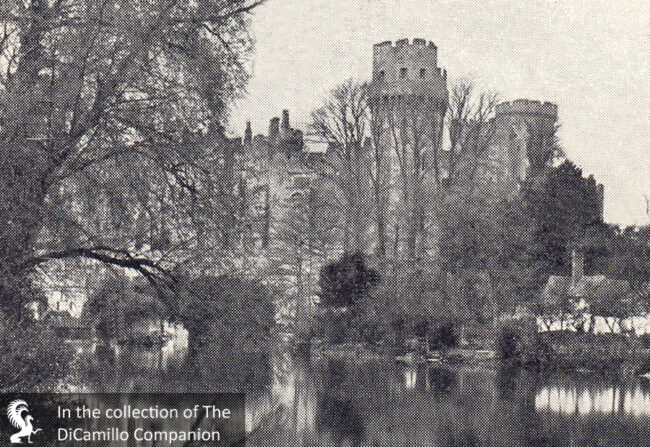
The castle from a 1914 photograph
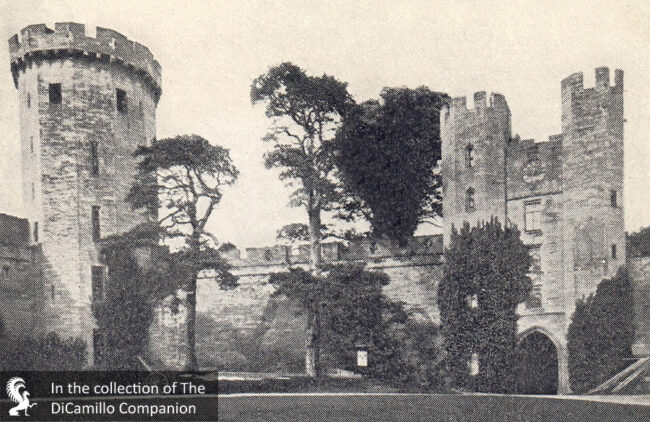
Guy's Tower from a 1914 photograph
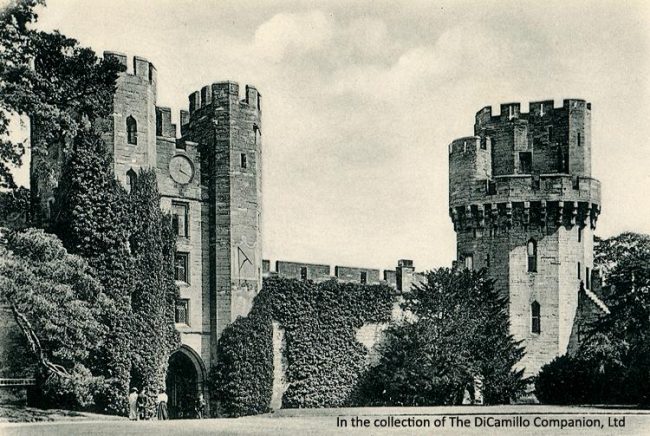
The castle gateway from an early 20th century postcard
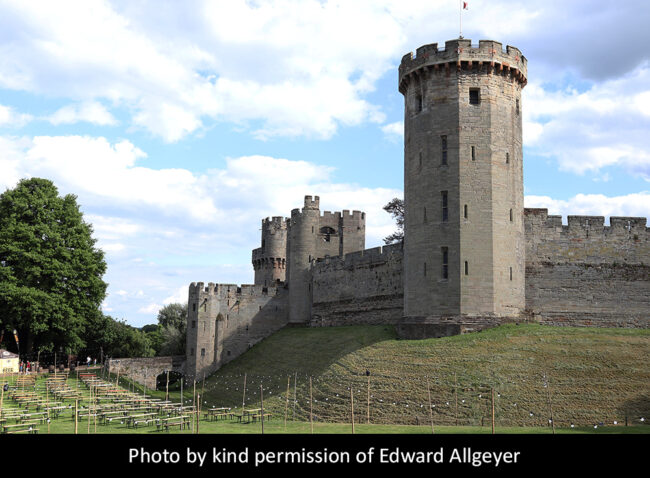
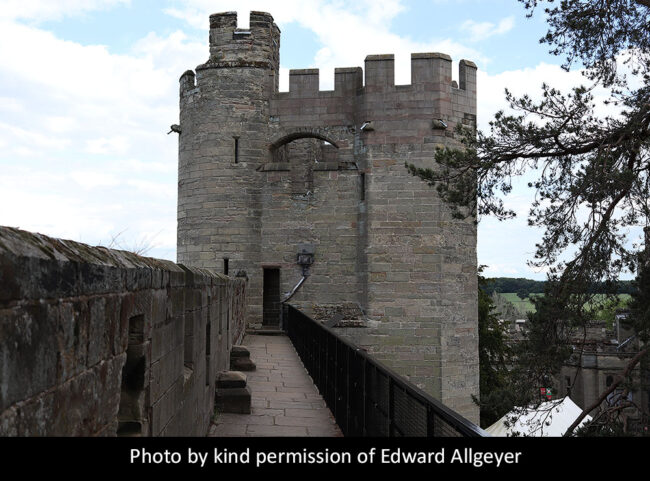
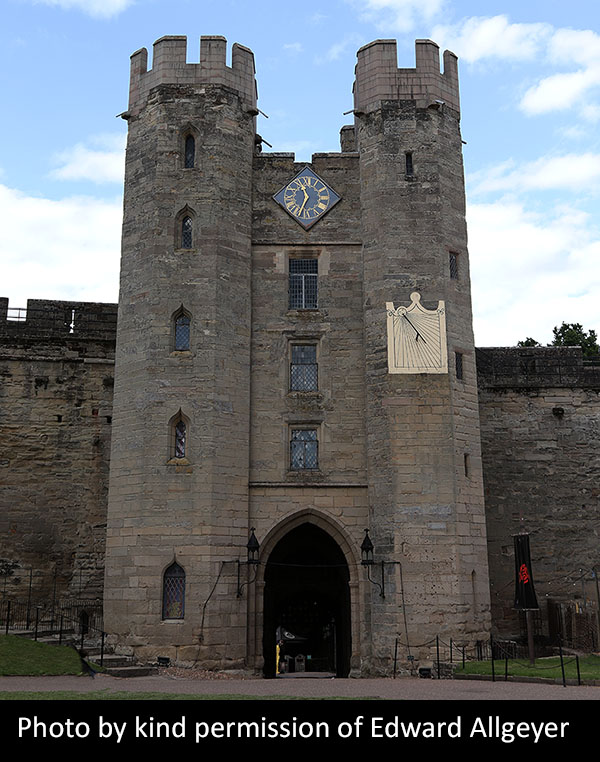
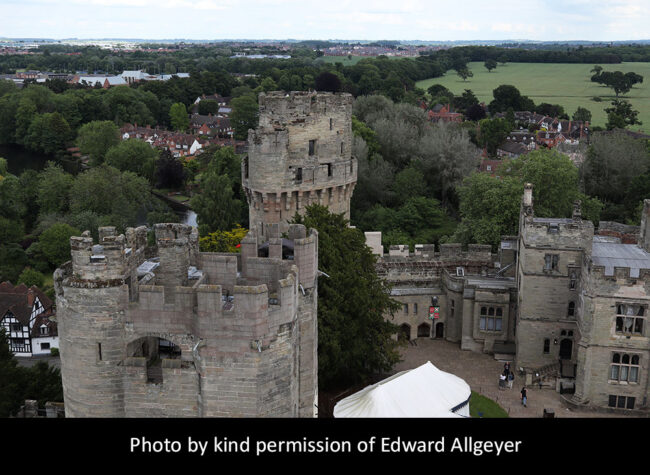

The Cedar Drawing Room from an 1883 postcard
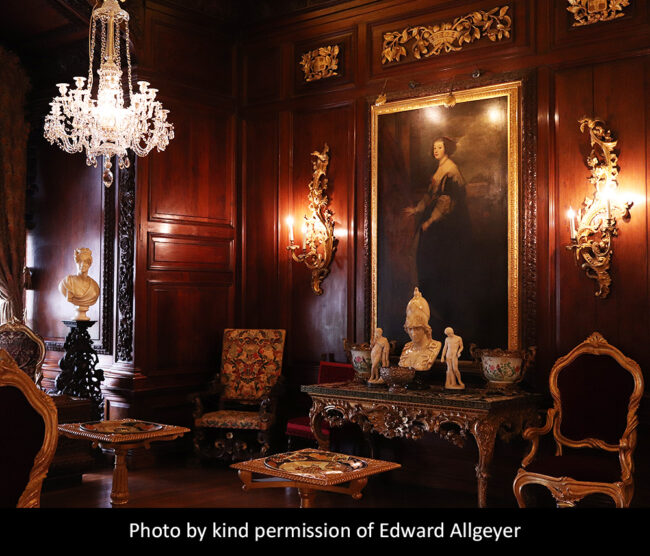
The dining room

The dining room
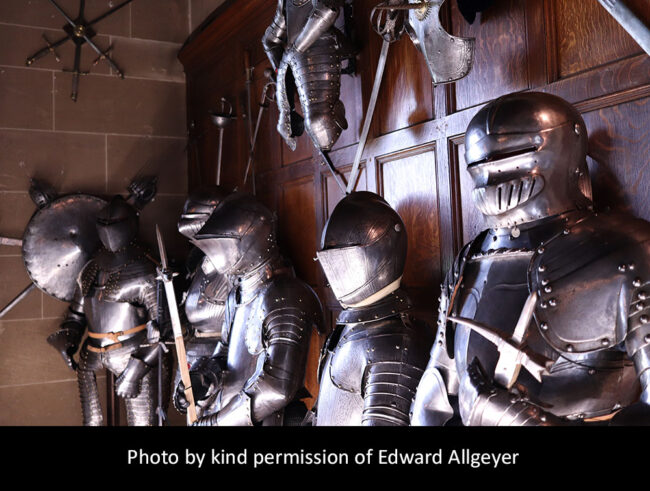


The library
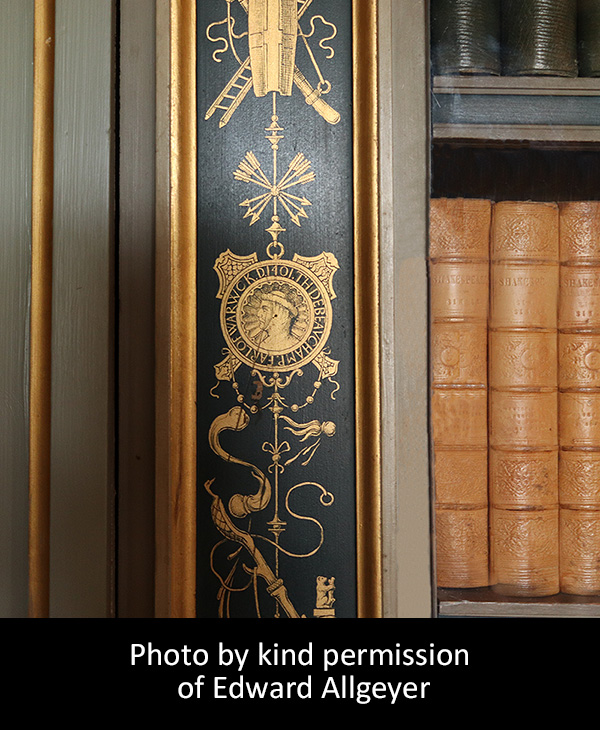
The library
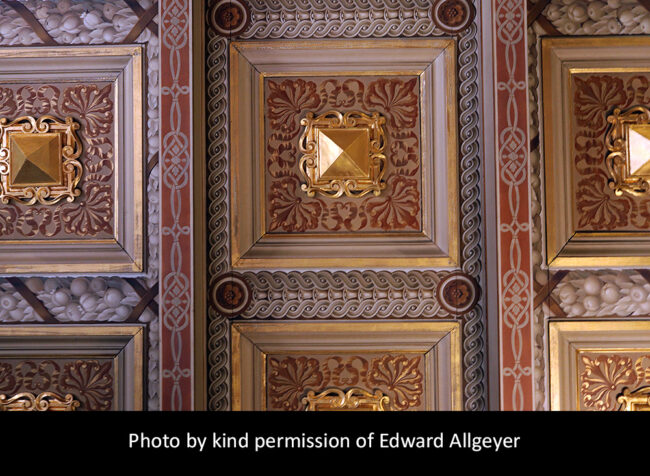
Library ceiling

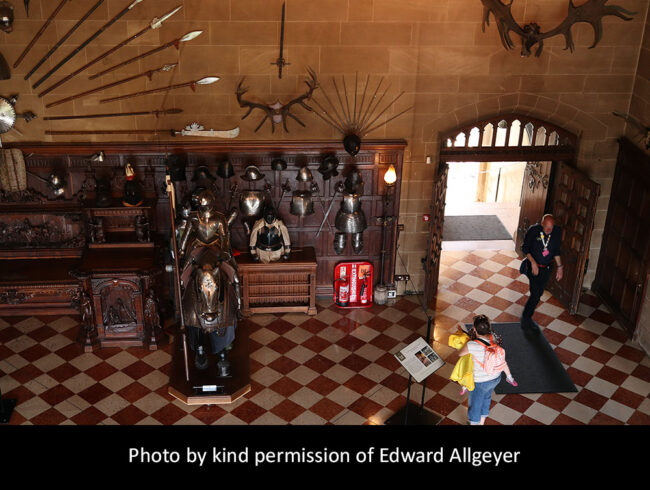
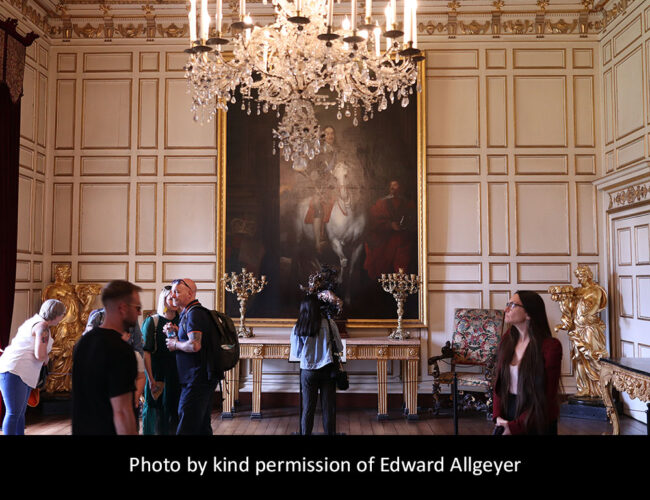
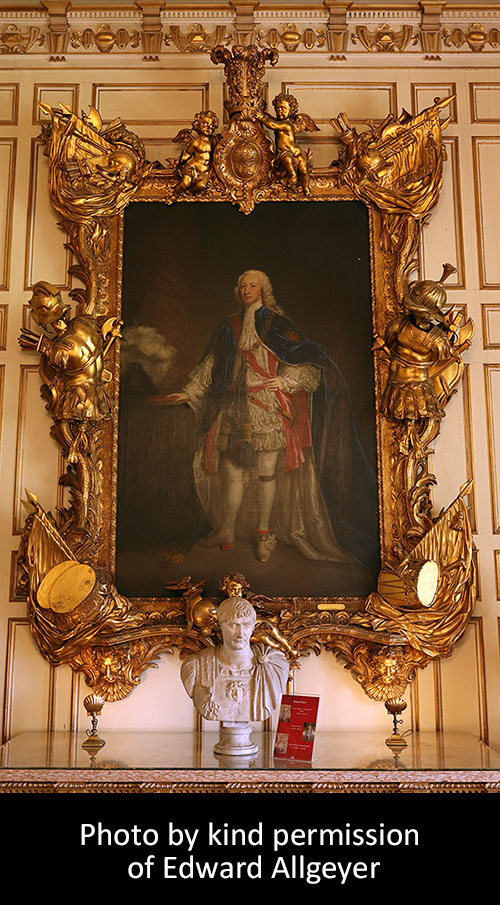

The Warwick Vase in the conservatory at Warwick Castle from an early 20th century postcard
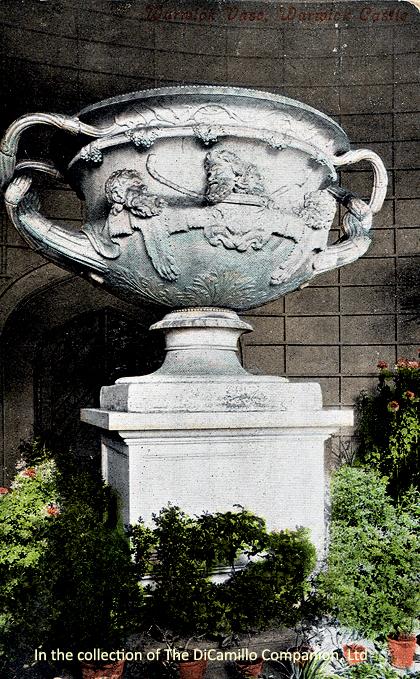
The Warwick Vase in the conservatory from a 1907 colored postcard
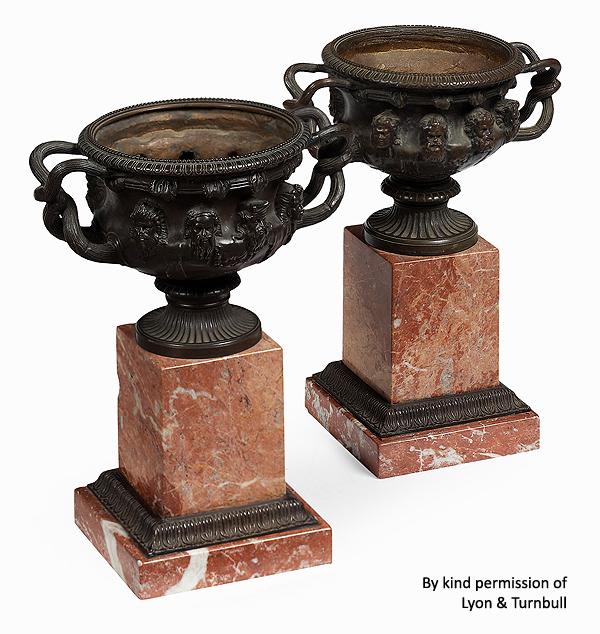
19th century bronze reproductions of the Warwick Vase

Circa 1820 medal by Birmingham manufacturer Edward Thomason celebrating his iron reproduction of the Warwick Vase

The Warwick Vase on a circa 1833 Spode dinner plate
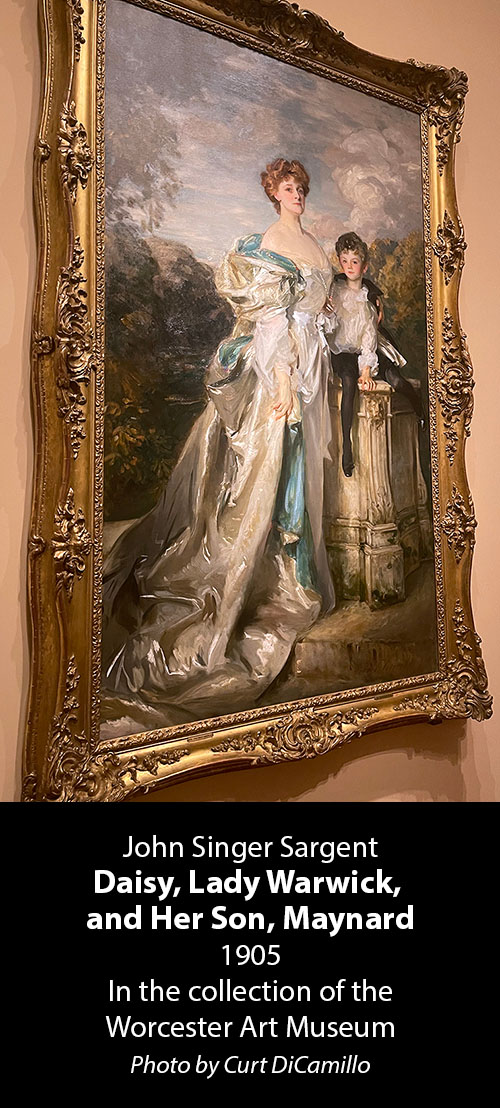

House & Family History: Warwick Castle was originally built in 1068 for William the Conqueror (the only surviving part of the conqueror's castle is Ethelfleda's Mount). By the 16th century the castle was the seat of Ambrose Dudley, 3rd Earl of Warwick. In 1604 King James I granted Warwick Castle to Sir Fulke Greville the Younger. One of the castle's most famous occupants was Francis Greville, 1st Earl of Warwick (fourth creation), who hired Capability Brown to landscape the castle's grounds and who was one of Canaletto's greatest English patrons (Canaletto completed five painted views and three drawings of Warwick Castle for Greville). The Prince of Wales, later King Edward VII, was a frequent visitor to Warwick in the late 19th century, when Daisy, Countess of Warwick (with whom he was having an affair; see "Images" section), presided over a glittering social swirl at the castle. In 1978 Warwick Castle was sold by the 7th Earl of Warwick (nicknamed the Duke of Hollywood; he was the first British aristocrat to star in a Hollywood movie) to Madame Tussauds (today Merlin Entertainments Group), who run it as a tourist attraction today.
Collections: The huge white circular marble Warwick Vase (it's 10 feet tall on its pedestal and weighs 8.25 tons; see "Images" section), formerly at Warwick Castle, was probably made in the Roman Empire during the time of Hadrian. The vase was discovered in 1770 in pieces at the bottom of Lake Tivoli, near Hadrian's Villa, just outside Rome. It's uncertain who reconstructed the vase using ancient Roman fragments; Nollekens and Piranesi are frequently mentioned as having performed the work, but the possibility that these famous artists worked on the vase has been discounted by most experts; the most likely candidate to have performed the work is Bartolomeo Cavaceppi. The time-consuming and expensive process of piecing together the fragments required the support of a generous and understanding patron; the noted lover of Greek and Roman antiquities Sir William Hamilton was such a patron. Sir William spent £300 (the equivalent of approximately £468,000 in 2016 inflation-adjusted values using the labour value commodity index) for the purchase and repair of the vase. After the restoration was completed Hamilton offered the vase to the British Museum, who turned him down (which they were to do again in 1978); whereupon, he prevailed upon his maternal nephew, George Greville, 2nd Earl of Warwick, to purchase the vase for Warwick Castle (hence its name). The earl believed that the fragments of the vase were Greek, but it is today generally believed that it was made between 118 and 133 AD for use at Hadrian's Villa at Tivoli. The vase remained in the conservatory at Warwick Castle until 1978 (the conservatory was built specifically to accommodate the vase; before that it was installed on the lawn at the castle). In 1977 the Warwick Vase was sold by Lord Brooke to a consortium of London dealers, who sold it in 1978 to the Metropolitan Museum of Art, New York; however, the British government put an export ban on the vase in order to allow a British purchaser to keep it in Britain for the nation (it was refused by the British Museum, who considered it not of sufficient archaeological value). In the end the Warwick Vase went to the Burrell Collection in Glasgow at the purchase price of £253,808, raised by the Scottish Heritage Fund, the Trustees of the Burrell Collection, the National Art Collections Fund, and two anonymous charities (the vase remains today in the Burrell Collection). The Warwick Vase has two large handles formed of interwoven vine branches, from which the tendrils, leaves, and clustering grapes spread around the upper margin and features classical bacchanal masks and associated emblems, such as a pine-cone tip staff known as a thyrsus. Enfolding the middle of the body is the skin of a panther, with heads and claws. Above are heads, all representing satyrs, except one, which is that of a female traditionally said to have been substituted for a missing head and made by an Italian carver in the 18th century into the likeness of Lady Hamilton; however, as the result of a supposed quarrel with her, the carver gave Lady Hamilton's head a fawn's ear. The vase stands on a square marble pedestal with an inscription in Latin giving its history, which translates as follows: "This monument of ancient Roman art and magnificence, was dug out of the ruins of the Villa at Tibur, which was held in delight by the Emperor Hadrian; the Knight William Hamilton, Envoy from George III, the Great British King, to the Sicilian King Ferdinand IV, caused it to be restored, and dispatching it to his country, dedicated it to the Father Genius of Fine Arts in the year of Our Lord 1774." The Warwick Vase is an important part of the history of the decorative arts in Britain and was enormously popular in the 19th century, during which replicas in bronze, stone, and silver were produced in all sizes, including a pair of silver-gilt (ormolu) copies of the vase as part of a 50-piece desert service made by the great Regency silversmith Paul Storr, produced 1812-13, and commissioned by Edward Lascelles of Harewood House to commemorate his elevation to the peerage as 1st Earl of Harewood. Storr made, over a period of years, copies of the vase in the form of silver-gilt ice pails, two of which (from 1823) are today in the collection of the Art Institute of Chicago. Rundell, Bridge and Rundell made two bronze copies of the Warwick Vase (in the same size as the original); one was purchased by George IV in 1821 and is today at Windsor Castle and the second was sold to the 3rd Duke of Northumberland for £900 and presented by him to the University of Cambridge in 1842 to mark his chancellorship (it remains at Cambridge today). The Birmingham manufacturer Edward Thomason made a copy of the vase in iron (in its original size) in 1820; this copy is now in the collection of Aston Hall in Birmingham (Thomason was so proud of his achievement that he struck a number of medals to commemorate his accomplishment; see photo of one of these medals in "Images" section). Obadiah Rich of Boston made a copy of the vase from pure silver coin (sans the Bacchic heads) to be presented to Daniel Webster (1772-1852) for his defense of "the Constitution against the assaults of nullification." This copy is now in the collection of the Boston Public Library. Copies of the Warwick Vase were the largest items ever manufactured in Sheffield plate, its most frequent form being tea urns and soup tureens. Between 1902 and 1904 Wedgwood produced its first copies of the vase, marketing them in black basalt ware and blue and white Jasperware. The design of the vase also appeared on countless porcelain pieces in the early and mid-19th century, particularly as a central design feature in dinner services. Reduced versions in cast-iron continue to be manufactured today as garden ornaments, and its influence continues to be felt: the vase was the model for the silver-gilt tennis trophy, the Norman Brookes Challenge Cup, which is awarded each year at the Australian Open. Napoleon, in his plans for the invasion of Britain, listed the Warwick Vase as one of the objects he intended to take back and install in the Louvre ("Had the Emperor Buonaparte been successful in conquering England...the first note in his pocket-book was to possess himself of the marble vase at Warwick." -Baron Denon). Jonathan Scott, writing in "The Pleasures of Antiquity: British Collectors of Greece and Rome," writes that the vase is "...a brilliant reconstruction." Scott goes on to point out that the majority of the vase is a modern (18th century) reconstruction that incorporates ancient fragments (the Villa Lante Vase in the collection of Woburn Abbey is similar in size and decoration to the Warwick Vase and was also found at Hadrian's Villa). Warwick Castle contained a very fine and notable collection of paintings (sold by the family before the castle became a tourist attraction), including "The Assumption" by Perugini, two van Dycks: King Charles I and Queen Henrietta Maria, "A Spanish Warrior" by Moroni, and Henry VIII by Hans Holbein, among others. Francis Greville, 8th Baron Greville (later 1st Earl of Warwick of the fourth creation), was one of Canaletto's greatest English patrons: between 1748 and 1752 Canaletto completed five painted views and three drawings of Warwick Castle for him. One of the paintings, a view of the south façade of Warwick Castle, is today in the collection of the Yale Center for British Art, New Haven, Connecticut. According to Desmond Shawe-Taylor, writing in "Art Treasures of England: The Regional Collections," these views of Warwick by Canaletto "...represent a foray into the antiquarian picturesque, unprecedented in Canaletto's work." The paintings were originally commissioned to hang in the earl's London townhouse in Grosvenor Square. The Warwick Castle Queen Anne Room Settee sold at Sotheby's, London, September 10, 2007 for £24,500 (against a high estimate of £7,000). The early 18th century giltwood and gesso settee was reputedly commissioned by Queen Anne; it was given to Francis Greville, 1st Earl of Warwick (fourth creation), by George III, and remained at Warwick Castle until sold in the 20th century; its companion is still in the collection of the castle. Warwick Castle today contains an exceptional collection of over 1,000 pieces of armor.
Comments: Warwick is considered the finest medieval castle in England.
Garden & Outbuildings: Sixty acres of grounds and gardens surround the castle. The conservatory was built to hold the famous Warwick Vase (see "Images" section), a reproduction of which today sits in the conservatory (the original was sold in 1978 to The Burrell Collection, Glasgow, where it remains today). Napoleon supposedly planned, after he had conquered Britain, to take the Warwick Vase to Paris. The hunting lodge was built by Ambrose Dudley, 3rd Earl of Warwick (second creation), for a visit to the castle by Queen Elizabeth I in 1572.
Architect: Timothy Lightoler
Date: 1763-69Architect: Lancelot Brown
Date: 1753-55Architect: Lancelot Brown
Date: 1748Vitruvius Britannicus: C. IVth. pls. 71, 72, 1739.
John Bernard (J.B.) Burke, published under the title of A Visitation of the Seats and Arms of the Noblemen and Gentlemen of Great Britain and Ireland, among other titles: Vol. II, p. 104, 1853.
John Preston (J.P.) Neale, published under the title of Views of the Seats of Noblemen and Gentlemen in England, Wales, Scotland, and Ireland, among other titles: 2.S. Vol. V, 1829.
Country Life: I, 112, 126, 1897. XXXV, 792, 842 plan, 1914. CLXXII, 1746 plan, 1882, 1952, 2023, 1982.
Title: Warwick Vase, The
Author: Marks, Richard; Blench, Brian J.R.
Year Published: 1979
Reference: pgs. 3, 8-9, 16, 18, 21-22, 25-26
Publisher: Glasgow: Glasgow Museums and Art Galleries
ISBN: 0902752073
Book Type: Light Softback
Title: Art Treasures of England: The Regional Collections
Author: Waterfield, Giles; et al.
Year Published: 1998
Reference: pg. 113
Publisher: London: Royal Academy of Arts
ISBN: 0900946598
Book Type: Softback
Title: Sotheby's Auction Catalog: Fine Furniture & Clocks, Including Property From Two Noble English Families, Sep 10, 2007
Author: NA
Year Published: 2007
Reference: pg. 95
Publisher: London: Sotheby's
ISBN: NA
Book Type: Softback
Title: This Other Eden: Paintings From the Yale Center for British Art
Author: Warner, Malcolm; Alexander, Julia Marciari
Year Published: 1998
Reference: pg. 72
Publisher: New Haven: Yale University Press
ISBN: 0300074980
Book Type: Hardback
Title: Warwick Castle Guidebook - 1956 - I
Author: NA
Year Published: 1956
Reference: pgs. 25, 27, 29, 33, 42, 44, 48
Publisher: Warwick: The Warwick Estate Office
ISBN: NA
Book Type: Light Softback
Title: Pleasures of Antiquity: British Collectors of Greece and Rome, The
Author: Scott, Jonathan
Year Published: 2003
Reference: pgs. 105-106
Publisher: New Haven: Yale University Press
ISBN: 0300098545
Book Type: Hardback
House Listed: Grade I
Park Listed: Grade I
Past Seat / Home of: Ambrose Dudley, 3rd Earl of Warwick, 16th century. Sir Fulke Greville the Younger, early 17th century; Francis Greville, 8th Baron Greville and 1st Earl of Warwick (fourth creation), 1727-73; George Greville, 2nd Earl of Warwick, 1773-1816; Henry Richard Greville, 3rd Earl of Warwick and 3rd Earl Brooke, 1816-53; George Guy Greville, 4th Earl of Warwick and 4th Earl Brooke, 1853-93; Francis Richard Charles Guy Greville, 5th Earl of Warwick, 1893-1924; Leopold Guy Francis Maynard Greville, 6th Earl of Warwick, 1924-28; Charles Guy Fulke Greville, 7th Earl of Warwick and 7th Earl Brooke, 1928-78.
Current Ownership Type: Corporation
Primary Current Ownership Use: Visitor Attraction
Ownership Details: Since 2007 owned by Nick Leslau's Prestbury Group and leased for 35 years to the Tussauds Group, which operates it as a tourist attraction. Tussauds has been owned by Merlin Entertainments since 2007.
House Open to Public: Yes
Phone: 01926-495-421
Fax: 01926-401-692
Email: [email protected]
Website: https://www.warwick-castle.com
Historic Houses Member: No